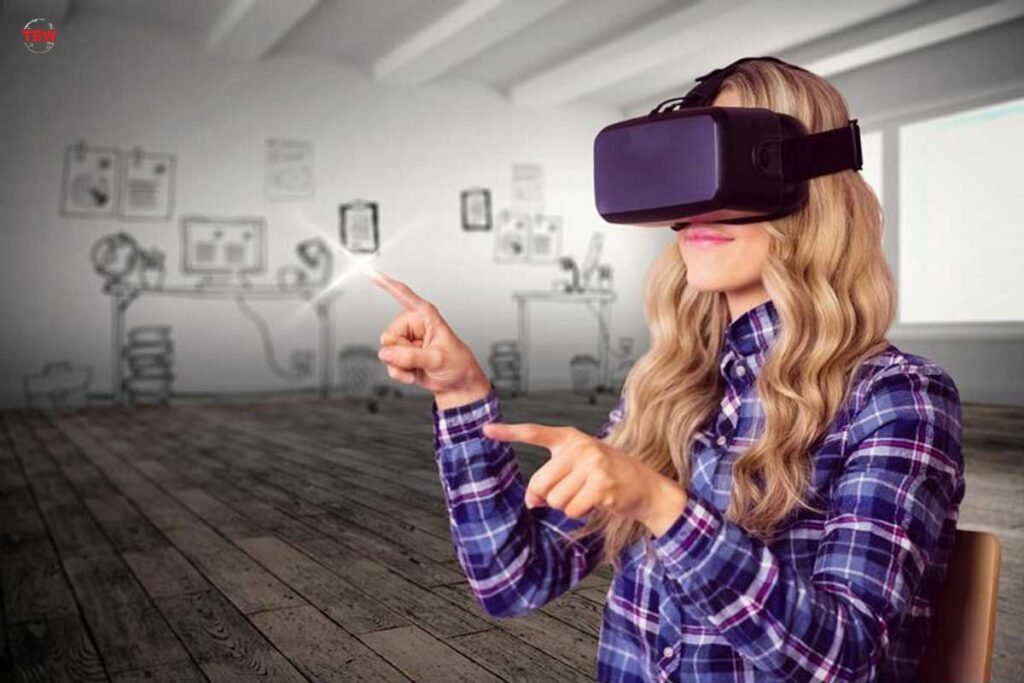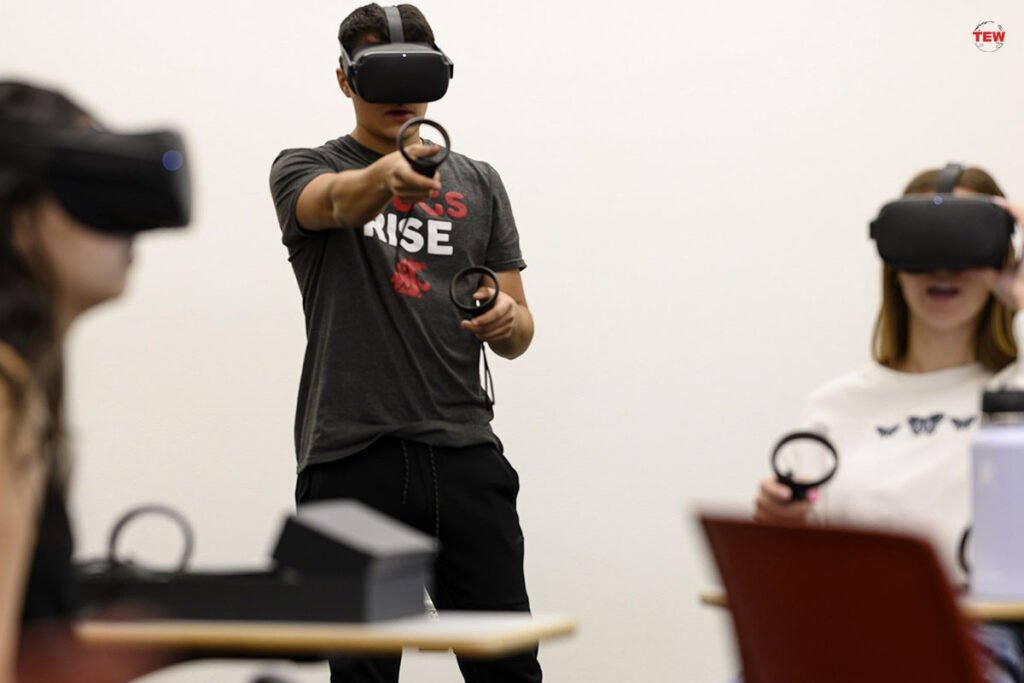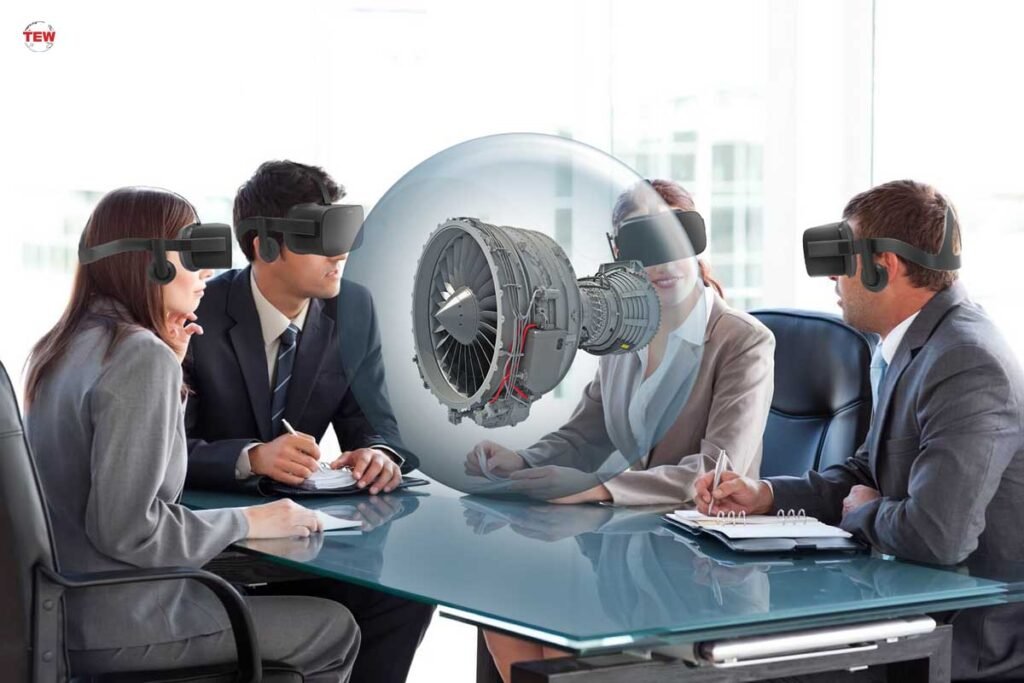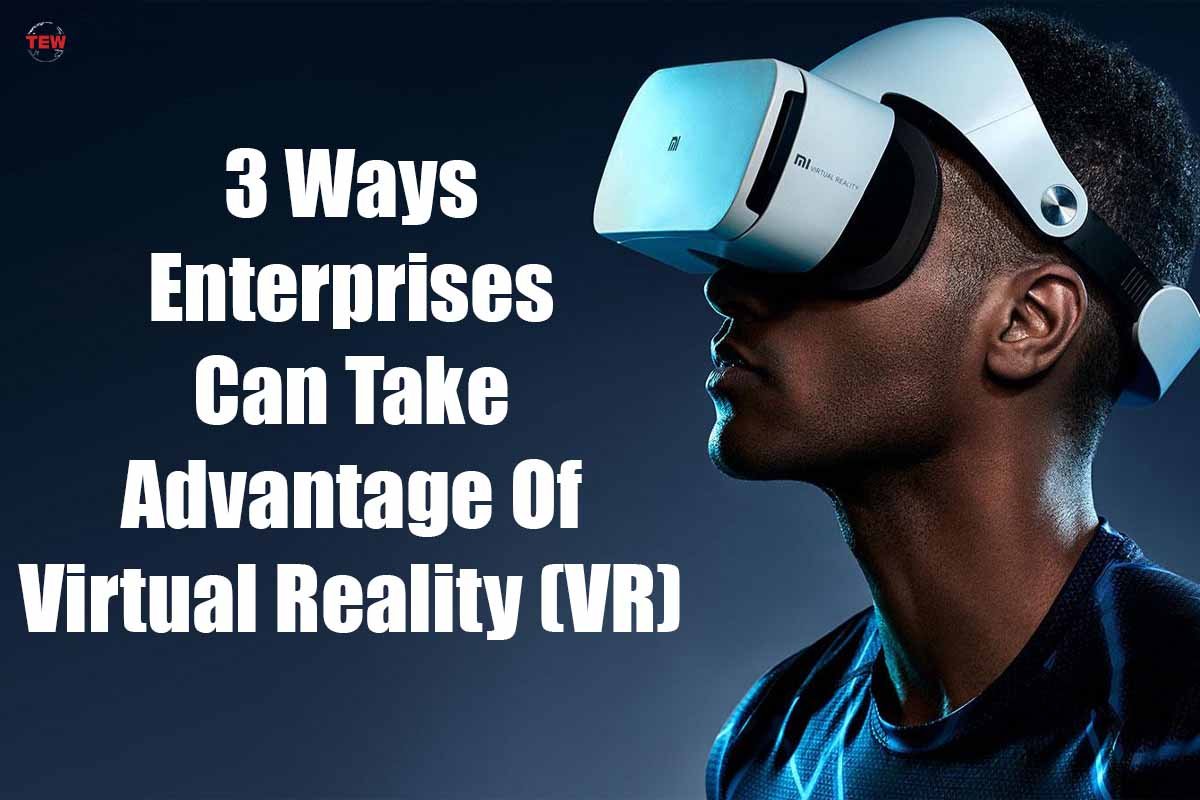Today, technological advancements have transformed the typical business environment. One of the technologies that have changed the business world is virtual reality (VR).
For many years, most people thought Virtual Reality (VR) was only restricted to gaming and entertainment. However, recent events have revolutionized workplaces. Businesses are now utilizing VR and other solutions to accelerate their growth.
This blog outlines what you need to know about VR. You’ll learn how VR works and how you can use it to your Advantage Of Virtual Reality;
What Is Virtual Reality (VR)?
Virtual reality is the use of computers to create a simulated environment. This advancement allows the user to interact in three-dimension worlds instead of viewing a screen in front of them. The level of simulation you’ll experience depends on the type of VR system. Here are the major types:
Non-Immersive Virtual Reality (VR) –

This type has the lowest level of simulation. The user will enjoy a computer-generated virtual environment. However, they’ll still be aware of their physical surroundings.
Semi-Immersive Virtual Reality (VR) –
This type provides users with a more immersive experience than non-immersive Virtual Reality (VR) but falls short of fully immersive VR. With semi-immersive VR, users can move around in a simulated environment, but physical sensations are not fully replicated, which can detract from the overall experience.
While semi-immersive VR has its limitations, it still offers an engaging and interactive experience that can be a valuable tool for various applications, including education, training, and entertainment. To enhance the experience, developers can explore ways to incorporate haptic feedback and other sensory inputs to create a more realistic and immersive environment.
Fully Immersive Virtual Reality (VR) –
As the name suggests, you’re fully immersed in the computerized environment. With this type, you’ll feel as if you’re physically present in the simulated world. However, you’ll need special equipment, such as body detectors, for a realistic experience.
This type was initially used in car racing games to give users the sensation of speed. However, businesses now use enterprise VR to optimize their operations and customer experience.
How Virtual Reality Can Benefit Your Business?
Here are ways you can use VR to elevate your business operations:
1. Mobile Training
Businesses have been upskilling their workforce for many years. This ensures they have enough skills to solve issues and utilize available resources. Gone are the days when training team members in a physical environment is a must. Today, hybrid workplaces have become more common, with most individuals working from home.
A VR system will help mentors create immersive experiences for their trainees. Also, it’ll be easier to assess and analyze their progress, regardless of the location.

One significant advantage of virtual training is that mentors can develop training programs through VR, allowing them to effectively train a dispersed workforce regardless of their physical location. This approach enables employees to maintain the necessary skills and knowledge, ultimately improving overall productivity.
2. Remote Meetings
Most businesses hold meetings regularly. They give the leaders a platform to share the business objectives and goals. These meetings also allow the team members to air their grievances, helping create a healthy workplace.
However, holding or attending meetings in this hybrid workplace can take a lot of work, considering the members might be living in different locations. Moving from one place to another is time-consuming and costly, which could affect the bottom line.
Fortunately, a VR system can transform how you hold meetings. The immersive experience allows the team members to share ideas and collaborate, just like in a physical environment. Also, it’ll remove distractions such as noise, boosting the overall workforce productivity.
What’s more, virtual meetings play a massive role in reducing your carbon footprint. They minimize the need for vehicles to move from one place to another, reducing your carbon footprint.
3. Product Demonstration
This is another way a business can take advantage of VR. When developing a product, it’s crucial to ensure you test and demonstrate it. However, this can be extra stressful to do physically. In a simulated world, however, the designers can collaborate easily. Also, they can test the expected final product in a virtual world to identify any flaws.

The customer can also test the product before purchasing. They’ll gauge whether the item will meet their needs and expectations. This reduces the chances of returns and refunds.
Bottom Line
As discussed above, advances in technology have revolutionized the business world. Enterprises are now using advanced solutions such as VR to optimize their processes. The implementation of VR helps businesses hold virtual meetings and training. It also helps them test and demonstrate their products, ensuring the customer gets a quality item.





